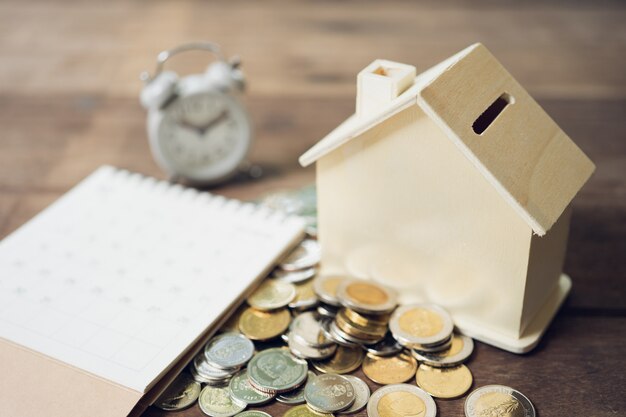Unlocking Your Mortgage Freedom: How to Use a HELOC to Pay Off Your Mortgage
For many homeowners, the dream of mortgage freedom seems distant. However, with strategic financial planning and a clear understanding of home equity solutions, that dream can become a reality faster than anticipated. One popular method is using a Home Equity Line of Credit (HELOC) to pay off a mortgage. This comprehensive guide will explore the intricacies of leveraging a HELOC, offer practical tips, and address frequently asked questions to help you make informed decisions.
🎯 What is a HELOC and How Does it Work?
A Home Equity Line of Credit (HELOC) is a type of loan that allows you to borrow against the equity in your home. Think of it as a revolving line of credit, similar to a credit card, but secured by your home. Here's a breakdown of how it functions:
- Equity Calculation: Your equity is the difference between your home's market value and the amount you owe on your mortgage.
- Credit Limit: HELOCs offer a credit limit typically determined by a percentage of your home's equity.
- Flexible Borrowing: You can borrow as needed, up to the established limit, during the draw period.
- Interest Rates: These are usually variable, which can lead to fluctuating monthly payments.
- Repayment: After the draw period, borrowers enter the repayment phase, often with structured payments to cover both principal and interest.
🏦 Why Use a HELOC to Pay Off Your Mortgage?
1. Lower Interest Rates
HELOCs often have lower interest rates compared to credit cards or other unsecured debt options. When you use a HELOC to pay off your mortgage, you might end up saving money on interest over time.
2. Flexible Repayment Options
With a HELOC, you have the ability to borrow only what you need and pay it back as you go, providing flexibility in managing your finances.
3. Tax Advantages
Interest paid on a HELOC may be tax-deductible, though it's wise to consult a tax professional to clarify eligibility based on your specific circumstances.
4. Improving Cash Flow
By consolidating other high-interest debts into a lower-rate HELOC, you can create a more manageable payment plan, freeing up cash flow for other financial goals.
📚 Steps to Use a HELOC to Pay Off Your Mortgage
Step 1: Assess Your Financial Situation
Begin by evaluating your current financial health. Consider your equity, credit score, and ability to repay the HELOC. Ensure you're in a stable financial position to take on this type of debt.
Step 2: Calculate Your Home Equity
Determine how much equity you have in your home. This will influence the credit limit you can secure with a HELOC.
Step 3: Shop for the Best HELOC
Research various lenders to compare terms, interest rates, and fees. Look for those offering favorable conditions and the best fit for your financial strategy.
Step 4: Apply for a HELOC
Once you've chosen a lender, submit a HELOC application. The lender will assess your financial data and home value to approve your credit.
Step 5: Strategize Your Debt Payoff Plan
Consider whether to pay off your entire mortgage or a portion of it. Develop a payment strategy that aligns with your financial goals—such as reducing the loan term or saving on interest payments.
Step 6: Manage the HELOC Responsibly
After obtaining your HELOC, manage it prudently. Pay attention to interest rate changes and create a repayment schedule that ensures you can handle payments even if the rate rises.
📈 Potential Risks and Considerations
Using a HELOC to pay off your mortgage isn't without risks. Here are critical factors to consider:
- Interest Rate Volatility: Since HELOCs generally have variable rates, prepare for potential increases in your monthly payment.
- Risk of Losing Your Home: Failure to keep up with HELOC payments could lead to foreclosure, as your home is collateral.
- Impact on Home Equity: Lowering your equity could affect future financing or selling opportunities.
- Potential Fees and Costs: Initial setup or annual fees can add to your total loan cost.
🤔 Frequently Asked Questions
Can a HELOC Replace My Mortgage Entirely?
Yes, a HELOC can replace your entire mortgage if you have accumulated sufficient equity and the lender approves a line large enough to cover your existing mortgage balance.
How Does a Draw Period Affect My Payments?
During the draw period, you can borrow funds but typically only need to pay interest on the amount withdrawn. Afterward, the repayment period begins, and payments will include both interest and principal.
What Happens If I Sell My Home?
If you sell your home, the remaining HELOC balance must be paid off during the sale's closing.
How Long is a Typical HELOC Term?
Most HELOCs have a draw period of 5-10 years, with a repayment term ranging from 10-20 years, depending on the lender and agreement terms.
🔑 Key Takeaways
✨ Evaluate Carefully: Consider your financial stability and equity before choosing a HELOC to pay off your mortgage.
✨ Seek Expert Advice: Consult financial professionals to determine if a HELOC aligns with your broader financial goals.
✨ Stay Informed: Keep abreast of interest rates and HELOC terms, ensuring you manage payments responsibly and effectively.
✨ Plan for Flexibility: While offering several benefits, ensure a HELOC matches your long-term financial plans.
Use these insights to navigate the decision of using a HELOC for mortgage payoff, helping you unlock the door to financial freedom and greater control over your financial destiny. 🏠🚀

Related Topics
- Are Heloc Loans Good
- Are Heloc Rates Fixed
- Are Heloc Rates Going Down
- Are Helocs a Good Idea
- Are Helocs Tax Deductible
- Are Student Loans Considered As Debt When Getting a Heloc
- Are Student Loans Considered As Debts When Getting a Heloc
- Are Student Loans Considered When Getting a Heloc
- Are Student Loans Considered When Getting a Heloc In Illino
- Are Student Loans Considered When Getting a Heloc In Illinois